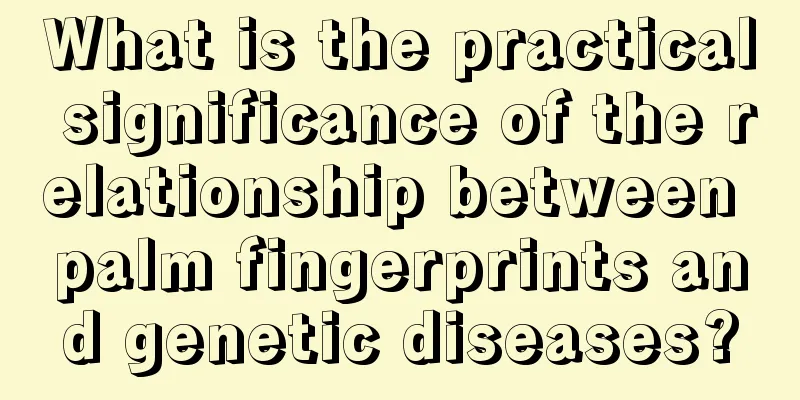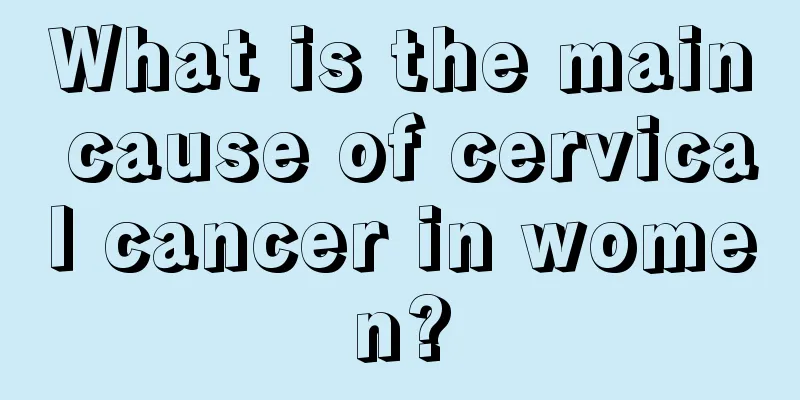What is the practical significance of the relationship between palm fingerprints and genetic diseases?

|
The lines on the palm are also called dermatoglyphics. This is a basic biological characteristic that everyone has. The lines on the palm make people's hands more powerful and allow them to grab smooth objects at will without dropping them. Palm fingerprints are a more widely used area. In modern life, people have conducted in-depth research on palm fingerprints. Let’s take a look at the relationship between palm fingerprints and genetic diseases and what practical significance it has. Dermatoglyphic analysis is an auxiliary means of medical diagnosis of genetic diseases, with unique advantages: simple, fast, economical, harmless to people, especially after the baby is born before other clinical manifestations appear. Dermatoglyphic analysis 1: Fingerprint shape Fingerprints are divided into three types according to the presence and number of tridents on the outer side of the fingertips: arch pattern, dustpan pattern and bucket pattern. The so-called trigeminal fingerprint refers to three groups of ridges with different directions converging together to form a "Y" or "human" shape. The arched pattern runs from one side to the other with parallel ridges, with a bow-shaped bulge in the middle and no tridents. The dustpan-shaped pattern, commonly known as a winnowing dustpan, has lines that start from one side, bend upward obliquely, and then return to the original side, shaped like a winnowing dustpan. There is a trident on the lower side of the dustpan. If the opening of the dustpan faces the ulnar side of the hand, it is called a cuneiform dustpan or a straight dustpan; if the opening of the dustpan faces the radial side of the hand, it is called a radial dustpan or a reverse dustpan. The ridges of the bucket-shaped pattern are in the shape of concentric circles, spirals or hyperbolas, with two tridents. They can be specifically divided into ring-shaped patterns, spiral patterns and twisted patterns. Normal people have certain frequencies of occurrence of various fingerprint patterns, as shown in the following table: As can be seen from the above table, the fingerprints of normal people's hands are mostly in the shape of a positive scoop and a bucket, while bow-shaped and reverse scoop are rare. However, the incidence of fingerprints in patients with genetic diseases is abnormal. For example, in the normal population, the incidence of inversion of the 4th and 5th fingers is only 0-1%, while in patients with congenital idiocy, inversion is more common. The total number of arch-shaped fingerprints on both hands is greater than 7, which is only about 1% in the normal population, but as high as 80% in patients with trisomy 18. The total number of bucket-shaped fingerprints on both hands is greater than 8, which is only 8% in the normal population, but reaches 32% in 5P- patients. The above cases are dermatoglyphic changes in patients with chromosomal diseases. |
<<: Early symptoms of delayed splenic rupture
Recommend
Is cholestatic liver disease serious?
Liver disease is a relatively serious disease bec...
Is there any intestinal cancer that will not recur?
Cancer is extremely painful for patients and is n...
Why does my ear hurt and itch?
If you experience pain and itching in your ears, ...
Causes and treatments of cervical cancer
Cervical cancer is a common malignant tumor in gy...
My butt has been hurting since the injection
Colds and flu are common diseases. Sometimes, for...
What are the methods of desalination?
As we all know, the salt content of seawater is v...
Side effects of radiotherapy for lung cancer
High-energy radiation damages normal cells while ...
Functional intestinal disorders
Functional intestinal disorder is a chronic disea...
Introduction to the differential diagnosis of laryngeal tumors
Laryngeal cancer is a malignant tumor originating...
What should I pay attention to when I have bladder cancer? Does drinking less water and long-term smoking easily lead to bladder cancer?
Bladder cancer is the most common malignant tumor...
Stage III endometrial cancer cure rate
Endometrial cancer is one of the gynecological ma...
How to overcome jealousy, detailed explanation by psychologists
Jealousy is a common psychological attitude. If j...
How long can I live if bile duct cancer has spread
After being diagnosed with cancer, many people ar...
How to tell if you can still grow taller
Now everyone's living standards have been imp...
Introduction to the 5 most common causes of liver cancer Symptoms in the middle and late stages Common 4 symptoms
Liver cancer is a type of cancer in the liver, wh...









